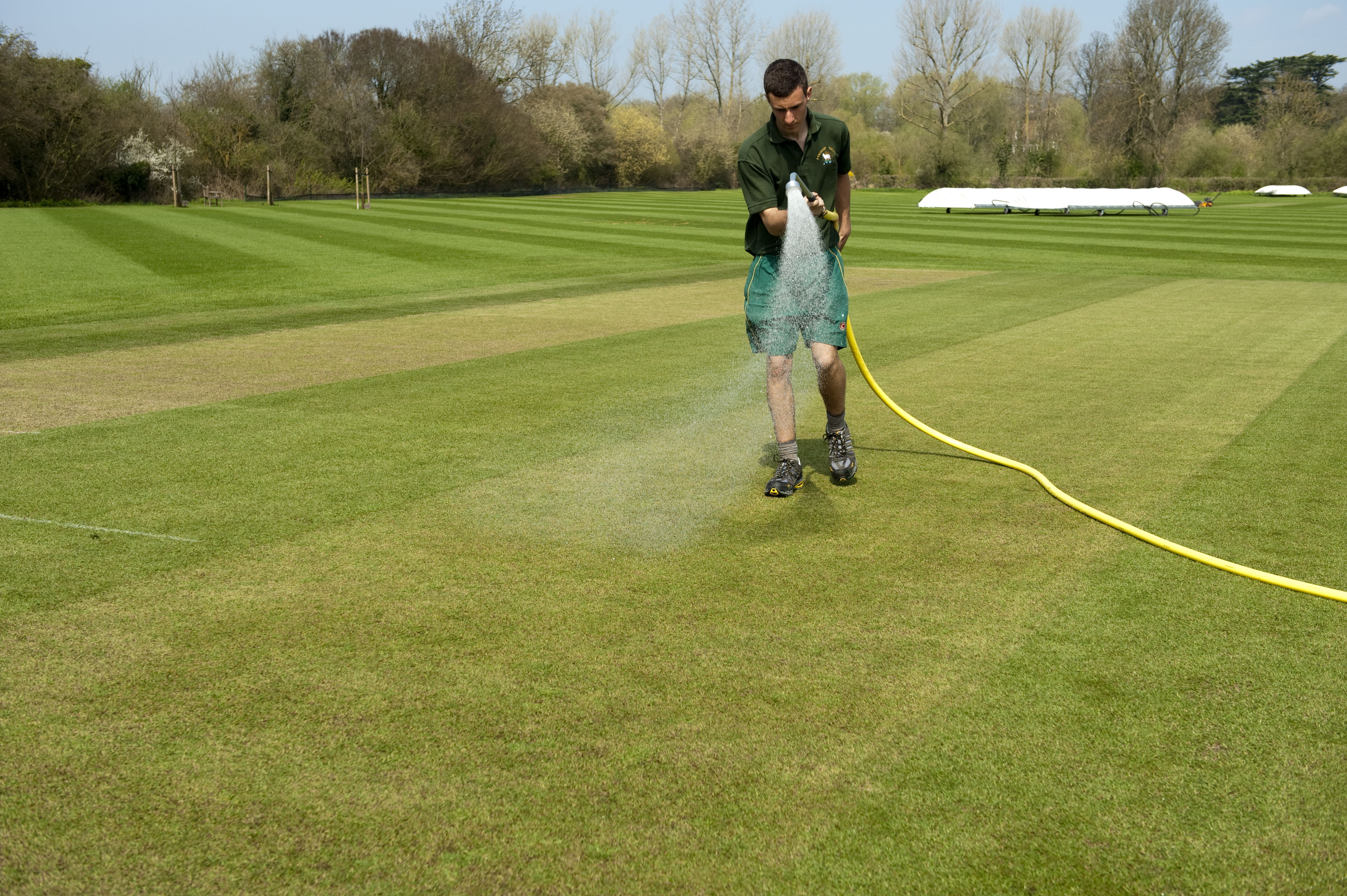Managing moisture in the Conditioning Phase is one of, if not the most, critical parts of pitch preparation.
The aim is to reduce moisture content over time from the higher moisture content needed for the start of rolling to the drier conditions required for play.
This is because as they dry, the clay loam soils used in cricket pitches will become harder (they compress less - giving better ball bounce) and stronger (giving more wear resistance on the foot holes).
The relationship between pitch performance and moisture content is shown in the diagram below. The majority of the conditioning phase is aimed at drying to get to the ‘optimum window’ at the drier end – but get too dry and the pitch will wear more quickly and offer more variable bounce, particularly if you are using the pitch for a number of days, or a number of matches. Some pitches will develop erratically steep bounce when over-dry, whereas others may offer lower bounce.
You can see from the diagram below that sides which have a stronger seam attack will aim for the darker green zone, but must be careful to ensure that this is dry enough not to dent on ball impact.
Sides with a stronger spin attack might aim for the red zone but bear in mind you may only be able to play 2-3 games on a pitch that dry, before it becomes too variable, whereas a pitch that carries a bit of moisture (but not so much that it is soft), could last 4-5 games if managed carefully.
Note for multi-day games, you might want to go in with a slightly greater moisture content on Day 1 than you would do for a one-day game to try and control the deterioration. But again, the pitch should not be soft on the surface and being damaged by the ball or under the bowler’s foot.
The key focus is to control the rate of drying and the best tool for doing this is covers. These can be used to stop rain from falling on the pitch and making it wetter (watch out for water flowing under the covers!) during the Conditioning Phase. Covers should then be removed to maximise the drying rate – exposing the pitch to the sun and air movement.
You can slow the rate of drying by using the covers to shade the pitch (roll on types), or to draw moisture to the surface (flat sheet types) but be aware that this can affect grass condition as well as moisture content.
Finally, if your pitch is drying too quickly, you can add small amounts of water: but do this evenly and in controlled, hand watered amounts. You can always add a bit more the next day, but it can be difficult to dry a pitch if the weather turns against you so keep an eye on the weather forecast.
Drying the pitch is a science guided by the art of experience. You will need to adapt to different weather conditions, and pitch performance and durability requirements - so look at how much water you are adding and taking away and learn from it as you analyse pitch performance and get feedback from players and umpires. Look at the pitch surface during and after a game and keep fine-tuning your moisture management to try and hit that sweet spot!



 Tweet
Tweet